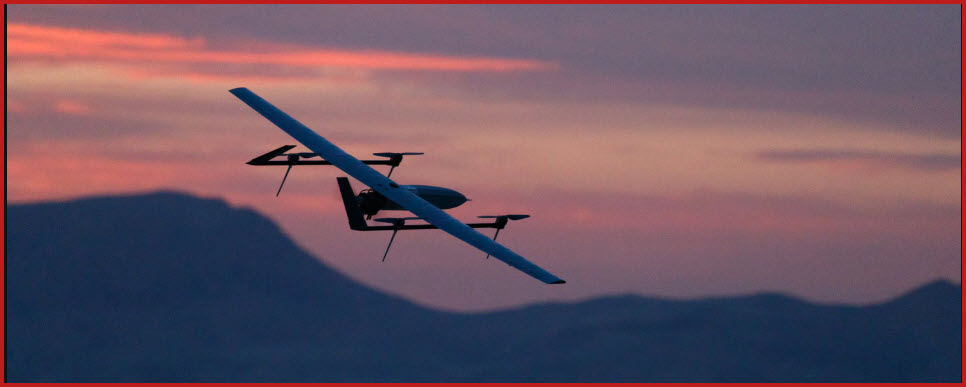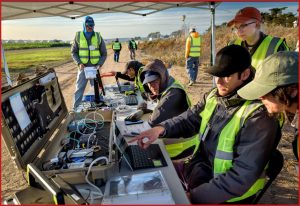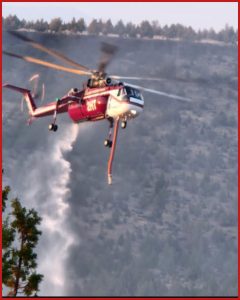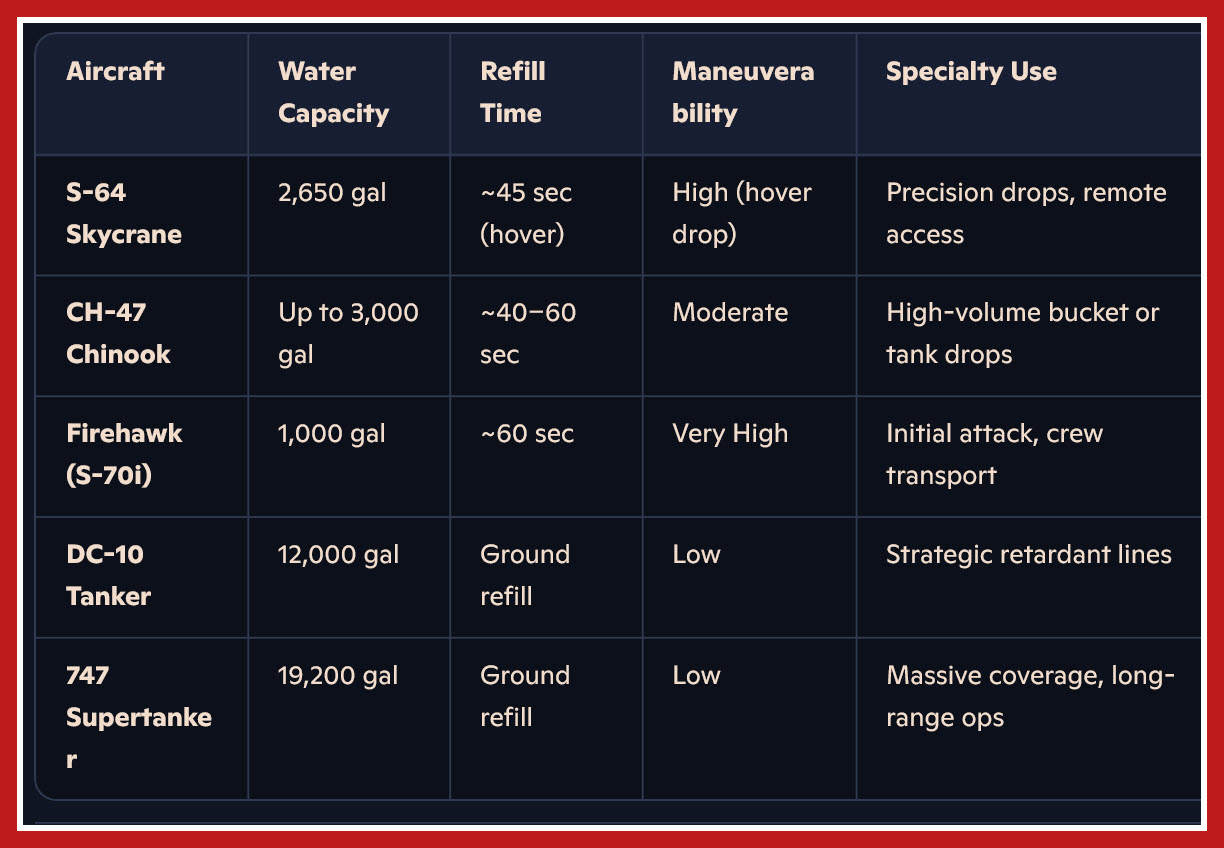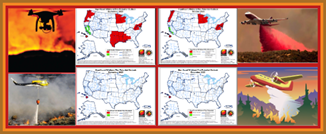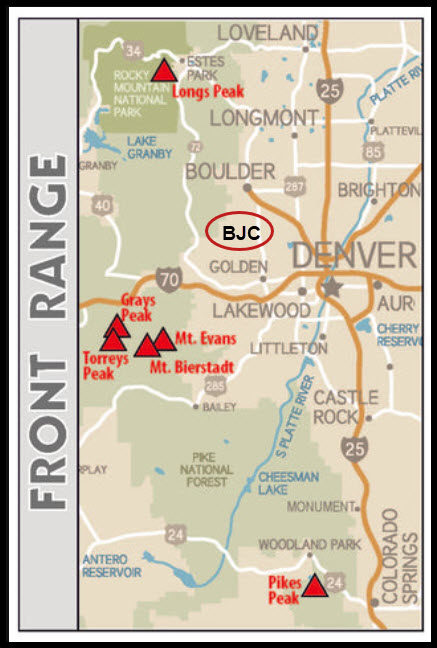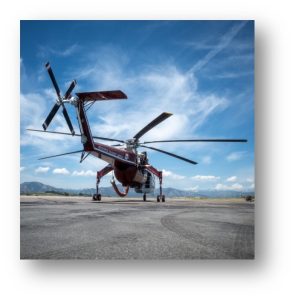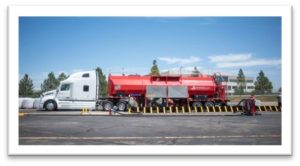Rocky Mountain Skycrane deployment and an update of Aerial Firefighting
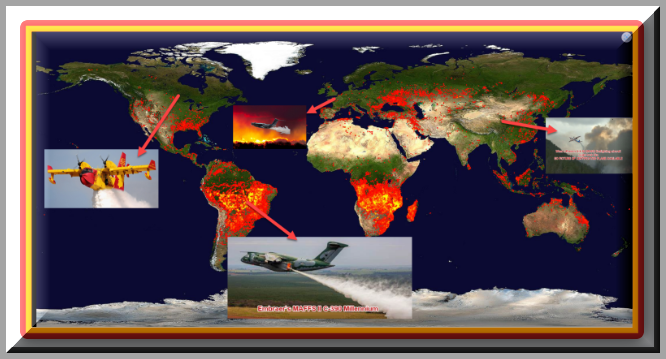
Natural disasters, attributed to droughts and rain torrents, are all too often lead stories for all media. A recent local news story (below about replacing planes with Sky Crane Helicopters) highlighted the aerial element of fighting wildfires. This is relatively tactical change, which is part of a broader strategy to attack these calamities that are endangering people and property.
A brief summary of three programs, technological and planing, to limit the wildfire damages:
- Drone Integration and Night Operations
- CAL FIRE has doubled its use of drones for tasks like aerial ignition, perimeter mapping, and post-fire assessments.
- Drones equipped with Plastic Sphere Dispensers (PSDs) are used for controlled burns in inaccessible terrain.
- Military-grade drones like the MQ-9A Reaper provide real-time intelligence, even through smoke or at night.
- NASA’s ACERO project is testing hybrid VTOL drones like SuperVolo, designed for smoky, low-visibility conditions.
- Aircraft Innovation and Tactical Deployment
- New aircraft like the Boeing 747 Supertanker and Airbus A400M Atlas deliver massive payloads—up to 19,000 gallons of retardant in one pass.
- Water-scooping planes like the CL-415 “Super Scooper” can refill mid-flight from lakes, enabling rapid redeployment.
- Smokejumper aircraft are used to deploy elite firefighters into remote areas, often ahead of ground crews.
- Airspace Management and Safety Enhancements
- The Portable Airspace Management System (PAMS) allows drones and crewed aircraft to operate safely in shared airspace.
- Strict Temporary Flight Restrictions (TFRs) are enforced to prevent collisions with unauthorized drones.
Here are the particular advantages of the below-reported Operation Sky Hammer
- The U.S. Forest Service has launched a new initiative called Operation Sky Hammer, positioning two CH-54B Skycranes at Rocky Mountain Metropolitan Airport in Broomfield, Colorado.
- This move replaces fixed-wing tankers at the JeffCo Air Base, boosting initial attack surge capacity along the wildfire-prone Front Range.
- These Skycranes can drop 2,800 gallons of fire retardant per sortie and refill from lakes or reservoirs for rapid redeployment.
- Erickson Inc., the primary operator of the S-64 fleet, equips Skycranes with:
- Sea Snorkel™: Refills in under 30 seconds from fresh or saltwater.
- Hover Snorkel: Refills in 45 seconds from water as shallow as 18 inches.
- These systems allow for continuous water drops, even in remote or rugged terrain.
- Skycranes vs. Other Aerial Firefighting Aircraft
- Skycrane Strengths
- Precision Hover Drops: Ideal for rugged terrain and urban-wildland interfaces.
- Fast Refills: Sea Snorkel and Hover Snorkel systems allow rapid turnaround.
- Modular Tank System: Microprocessor-controlled doors enable variable coverage levels.
- Rear-Facing Controls: Unique cockpit setup allows pinpoint load placement.
- Trade-Offs
- Lower Speed & Range: Compared to fixed-wing tankers, Skycranes are slower and have shorter operational range.
- Smaller Payload: While agile, they carry less than VLATs like the DC-10 or 747.
- Crew Intensive: Requires skilled pilots and maintenance teams for precision ops.
- Deployment Scenarios
- Skycrane: Best for tactical drops in steep terrain, urban perimeters, and rapid redeployment.
- Chinook: Suited for high-volume drops over broad areas; often used in surge capacity.
- Firehawk: Agile and versatile—great for initial attack and medevac.
- Fixed-Wing Tankers: Strategic line-building and containment over large fires.
Extensive research by NASA, the Forest Service, the National Park Service is exploring how this use of aviation might benefit from purpose-built aircraft, improved techniques and integration of fixed-wing, rotorcraft, UAS and eVTOL might add to the attack against these calamities.
A brief inventory on similar articles:
- Aviation’s positive role in the battle to save the planet
- Secretary and Administrator (D) please make aviation a positive force to quench wildfires ASAP
- Two Aerial Attack Paths for Wildfires
‘Sky crane’ helicopters replace wildfire planes at Colorado airport
By
Logan Smith
The U.S. FOREST SERVICE (WILDLAND FIRE) has shifted aerial wildfire firefighting resources along Colorado’s Front Range. Two large ‘sky crane’ helicopters were moved into position at Broomfield’s Rocky Mountain Metropolitan Airport (BJC) this week.
This puts two firefighting helicopters in position where the wildfire danger is on the rise, the Forest Service stated in a press release.
The move was dubbed “Operation Sky Hammer.” Funding is provided by the U.S. Department of Agriculture, the agency that oversees the Forest Service.
A Sikorsky “Sky Crane” helicopter sits at the JeffCo Air Base at the Rocky Mountain Metropolitan Airport in Broomfield. The U.S. Forest Service has re-positioned wildfire firefighting planes which were previously staged at the airport in favor of the two Sky Cranes that were recently moved there. U.S. Forest Service. Informally known as Sky Cranes, the two Sikorsky CH-54B models are staged at the airport’s JeffCo Air Base, formerly the JeffCo Air Tanker Base. JeffCo will now house helicopters only. The planes previously stored there have been re-positioned primarily in southern Colorado.
“This innovative program is adding capacity to our wildland firefighting response in Colorado and throughout the Rocky Mountain Region,” stated Troy Heithecker, Regional Forester for the Rocky Mountain Region. “Coupled with the modernized airtanker base in Colorado Springs and our other airtanker bases across our region, we will be able to respond more quickly and efficiently when wildfires start.”
Right now, the other wildfire air tanker bases in the region are in Pueblo, Durango, Grand Junction, and Rapid City, South Dakota.
U.S. Forest Service
Placing the helicopters in Broomfield is meant to increase “surge capacity” for initial attack on wildfires, or the first actions against a potentially dangerous (to human life) or destructive (to property) wildfire, the USFS stated.. They can be ordered by any level of fire command.
“Our goal is to work with local, state and federal cooperators to swiftly suppress small fires before they become large, complex incidents to ensure we can protect lives, property, economies and natural resources,” Clark Hammond, Regional Aviation Officer for the Rocky Mountain Region, stated in the press release. “A successful initial attack frees up our resources more quickly to be ready for the next wildfire start.”
The Sky Cranes are capable of dumping 2,800 gallons of red fire retardant as part of that initial attack. They are then capable of landing to refill with fire retardant or staying aloft and drawing from ponds, lakes or reservoirs for repeated water drops.
A large tanker truck called a mobile retardant base follows the helicopters into areas where fire retardant isn’t readily available.
A mobile retardant base truck based alongside the Sikorsky
“Sky Crane” helicopters in Broomfield. U.S. Forest Service
The Sikorsky’s are contracted from the fleet owned by Helicopter Transport Services, an Ontario-based company which owns more than 60 aircraft and offers specialized aviation services. It also staffs the aircraft.
OPERATION SKY HAMMER is a trial program, a Forest Service spokesperson told CBS Colorado. It will be in place for this entire 2025 summer fire season.
The helicopter crews are in intensive training over the next few days. They could be assigned and on the move by Saturday.
According to its press release, the Forest Service manages over 70% of the federal wildland firefighting resources and nearly all federal aviation and logistical support contracts. This year, it will have more than 400 total aircraft available nationwide, including multi-engine airtankers, helicopters, multi-engine water scoopers and other firefighting aircraft.
